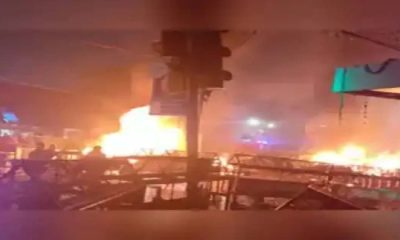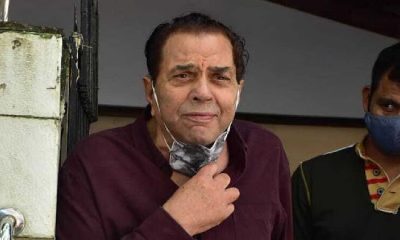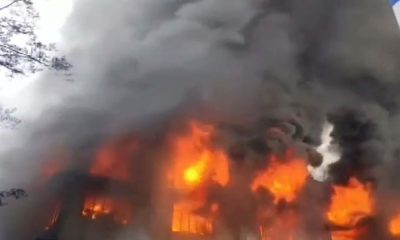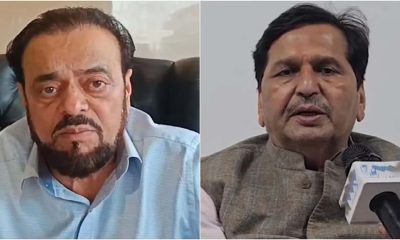Maharashtra
Mumbai Rains: Waterlogging, Severe Traffic Jams Trigger Outrage Among Activists And Citizens Over Authorities’ Failures Despite Crore-Worth Investments
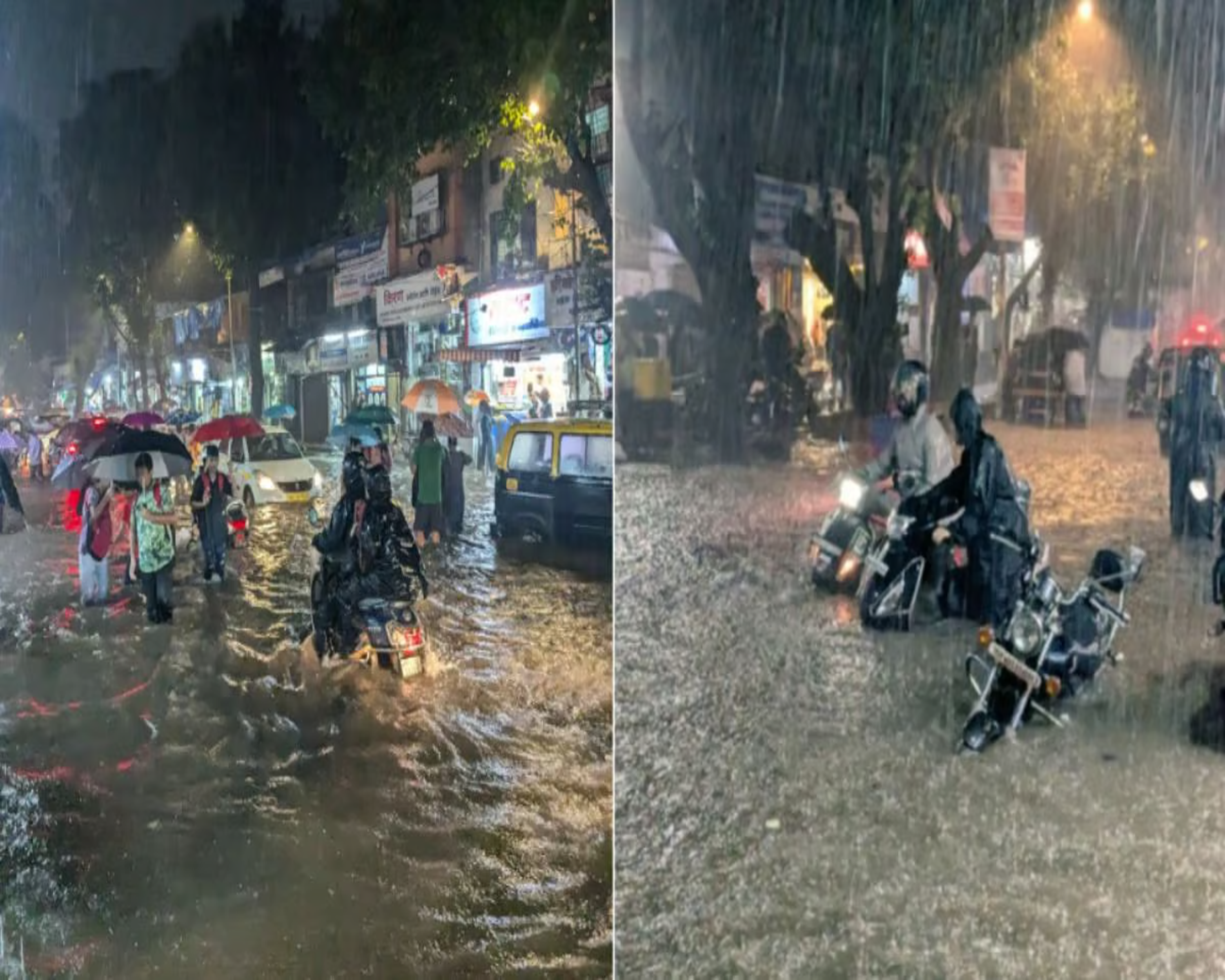
Mumbai: Nearly two decades ago, Mumbaikars endured a nightmare that still lingers in their memories. Despite investing several crores of rupees, the city remains plagued by persistent waterlogging and severe traffic disruptions.
Last Wednesday, this ongoing issue came to a head, prompting backlash from activists, citizens’ associations, and former corporators who condemned the civic body for its repeated failures.
This Friday was no exception, as heavy rainfall continued from Thursday night, leading to widespread waterlogging and significant traffic disruptions across major routes. Multiple vehicle breakdowns exacerbated the traffic jams, particularly in the central and western suburbs.
As per data received from the Indian Meteorological Department (IMD) the city has received more than its monthly average rainfall in just five days of rainfall that began on September 23. During this period, the city recorded 393 mm of rain from September 23 to 27, exceeding the monthly average of 359.6 mm.
This significant rainfall also pushed the total seasonal precipitation past 3,000 mm, with the Santacruz observatory recording 3,016 mm as of the morning of September 27.
On Friday, One of the major disruptions occurred at the Andheri subway, which was closed after it became heavily waterlogged. This forced traffic authorities to divert vehicles to the Gokhale Bridge. Several vehicles broke down in the area, exacerbating the already dire traffic situation.
The day began with a major traffic jam at the Bandra-Kurla Complex (BKC) connector caused by a BEST bus breakdown, worsening congestion amid peak-hour traffic and the closure of the Sion Road Over Bridge (ROB).
As rainfall intensified in the western suburbs, waterlogging in areas like Andheri led to the subway’s closure. The Eastern Freeway experienced water accumulation and low visibility, significantly slowing traffic and impacting movements in the eastern suburbs and South Mumbai, including P. D’Mello Road.
Mumbai Traffic Police reported additional disruptions across the city, including delays at Aarey Bridge due to a tempo breakdown, Marine Plaza in South Mumbai from a bus breakdown, and Airoli Bridge from a car breakdown.
Other blockages were reported at Sion Hospital Road from a fallen tree, Dindoshi on Altamount Road due to a vehicle breakdown, and the Santacruz-Chembur Link Road, where another vehicle broke down.
Meanwhile, recent rainfall has led to the identification of several new flooding hotspots, including Mankhurd, Govandi, Godrej Jetty in Vikhroli East, Bhandup and Powai.
Civic data reveals that Mankhurd recorded an astonishing 276.20 mm of rain between 6 pm and 10 pm on Wednesday, while Bhandup received 198.39 mm. The average rainfall in the eastern suburbs during this period was 167.48 mm.
Overflowing drains also caused waterlogging on the railway tracks severely affecting Central and Harbour Railway services. Reflecting on the past, activists noted that on July 26, 2005, the city was overwhelmed by 944 mm of rainfall in just 24 hours.
Today, even a mere 200 mm can result in flooding. The rampant concretisation has destroyed natural drainage systems, leaving no place for rainwater to go. Additionally, construction debris and garbage dumped in nullahs continue to choke stormwater drains, worsening the situation, activists expressed.
The civic body claimed that around 300 dewatering pumps were activated on Wednesday. However, sources noted that many of these pumps were unable to handle the water pressure and failed to recede rainwater quickly.
Former Opposition leader Ravi Raja expressed his frustration, stating, “Shame on the BMC for their failure to properly cover nullahs or fix manholes. They have squandered hundreds of crores yet still fail to fulfill their responsibilities. The annual spending on desilting work is merely eyewash—public money goes down the drain.”
The Andheri subway has been shut down multiple times this monsoon. Dhaval Shah, founder of the Lokhandwala Oshiwara Citizens Association, added, “The narrowing of the nullah has obstructed water flow. The BMC doesn’t need to implement fancy solutions; they simply need to remove encroachments near Mogra nullah.”
Activist Godfrey Pimenta expressed concern, stating, “Despite substantial taxpayer investments in infrastructure, the situation is deteriorating. We’re witnessing the alarming collapse of bridges, flooding in subways, crumbling buildings, and frequent fire incidents. It’s clear that the BMC has failed to fulfill its mandate for effective civic management.”
Environmental activist Zoru Bhathena added, “In 2005, the city experienced exceptional rainfall of 944 mm, but now even 200 mm leads to waterlogging in several areas. It’s shameful that the situation hasn’t improved. Rainwater should be absorbed by the ground, with excess flowing into the drains. The BMC spends crores annually on drains and concrete, but where will the water go?”.
Meanwhile, a senior civic official, speaking on condition of anonymity, noted, “The IMD issued a red alert at 5:40 PM on Wednesday, but heavy rain had already started, and commuters were heading home. When we pump out water, it should go into the stormwater drains; however, the nallahs and drains were overflowing, leaving us unable to dispose of the excess water. In recent years, we’ve seen changing rainfall patterns, resulting in record levels of rain in specific areas.”
The official added that coastal cities like Mumbai are increasingly vulnerable due to extensive concretisation, which limits natural drainage and reduces water absorption capacity. “The stormwater drains in the suburbs can handle around 50 mm of rain per hour, while the island city has underground drains. We are currently identifying new flooding spots alongside the existing ones, and our officials will inspect each site to determine remedial measures,” he added.
Maharashtra
Mumbai arms supplier arrested from Ghatkopar depot
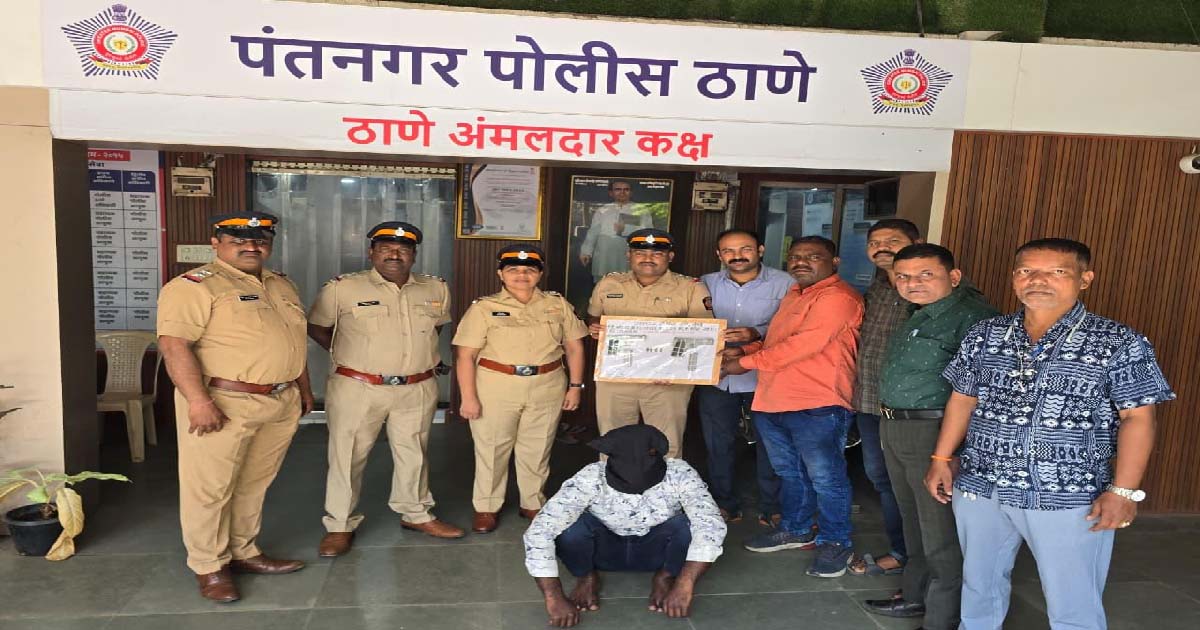
Mumbai: Police has claimed to have arrested an arms supplier from Ghatkopar Bus Depot who had come here to supply arms to Mumbai. The Mumbai Police Ghatkopar Anti-Gang Squad received information about this. The police laid a trap and took the accused into custody and recovered two country-made pistols and four live cartridges from his possession. During the investigation, the police asked him his name and he revealed his name as Ajay Kailash, a resident of Ujjain. The police have registered a case in this matter and started the investigation. Pantnagar Police has started the investigation in this matter to find out from where the accused had brought the arms to supply arms. This action was taken by DCP Rakesh Ola on the instructions of Mumbai Police Commissioner Deven Bharti.
Crime
Thane: Man Stabbed To Death In Dombivali Hotel After Minor Altercation

Thane: A man was stabbed to death in Dombivali in Thane district during an altercation after he accidentally brushed against another person, a police official said on Monday.
The incident took place in a hotel in the early hours of Sunday in MIDC Phase 1 area, the Manpada police station official said.
“Akash Bhanu Singh (38) and his friends were having dinner at the hotel when he accidentally brushed against the accused, who picked up a fight. He along with some others stabbed Singh to death. Two of Singh’s friends, who tried to save him, also sustained injuries and have been hospitalised,” the official said.
Four persons were booked under Bharatiya Nyaya Sanhita sections for murder and other offences, though no arrest has been made, he said.
Crime
‘Don’t You Know Marathi?’: Vadapav Vendor & Two Others Assaulted By Four Men Over Language Dispute In Kalyan
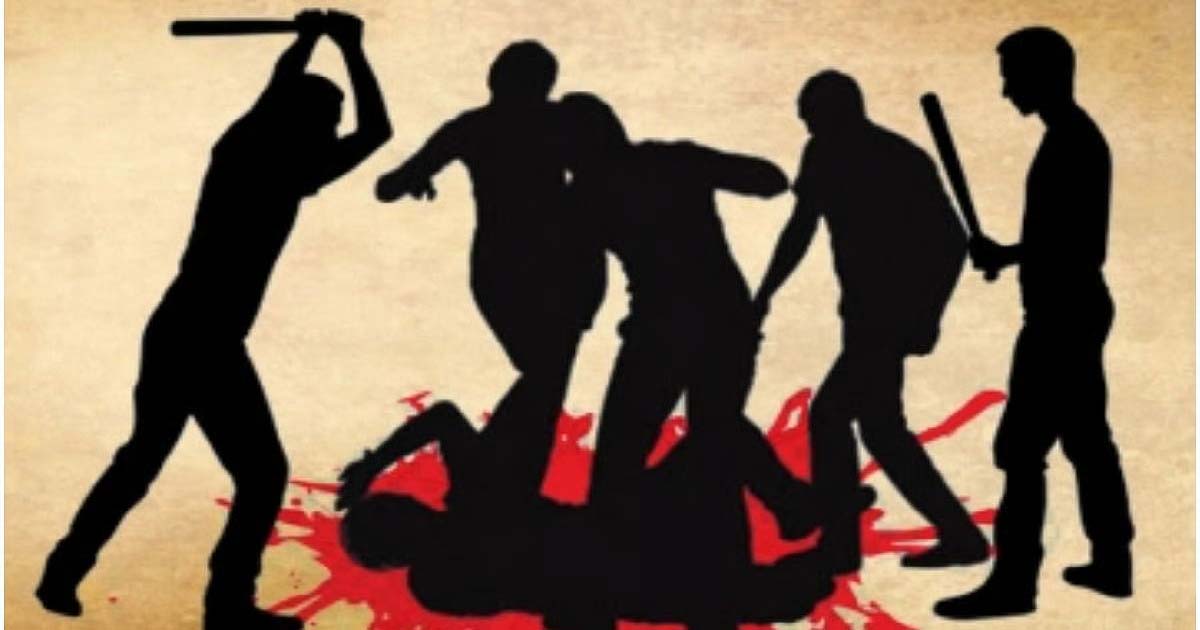
Mumbai: In a troubling incident on Sunday night in Kalyan East near Chakkinaaka and Santoshnagar, a vadapav vendor and two of his companions were brutally assaulted by four men. The attack occurred after the assailants asked the vendor, “Do you know how to speak Marathi?” and began the assault when he did not respond affirmatively.
The vendor, identified as Vishnu Thapa, and his co-workers told police at the Colsewadi station that they work at a small eatery named Riddhi Bhojanalay. Around 8 pm two unknown men arrived at the shop, ate food and left. They returned shortly after and confronted Thapa with the question “Marathi yet nahi ka?” (“Don’t you know Marathi?”). Without waiting for a response they started beating him. He suffered serious injury to his nose in the first attack.
After the two men left, Thapa and his colleagues resumed work. Minutes later the men returned, this time bringing two others. The group of four again raised the language question and launched a fresh attack. Co-worker Madan Thapa was hit with a stone slab. Another colleague, Ali Khan, had his mobile phone smashed to the floor amid the chaos. The assailants also vandalised the shop, throwing food, utensils and trays outside.
The three victims were taken to hospital for treatment. A First Information Report has been registered at the Colsewadi police station and investigations are underway, with Police Constable Jadhav assigned to the case. Locals say the area has long been troubled by harassment of street vendors and extortion attempts; some offenders had been removed by police about 18 months ago.
The incident has raised serious concerns among workers and local vendors who feel vulnerable in the wake of such attacks. For many migrants eating and operating in the city, language and region should not become triggers for violence. City police have been urged to increase patrols in the zone and ensure protection for small street-vendors, especially during late evening hours.
-

 Crime3 years ago
Crime3 years agoClass 10 student jumps to death in Jaipur
-

 Maharashtra1 year ago
Maharashtra1 year agoMumbai Local Train Update: Central Railway’s New Timetable Comes Into Effect; Check Full List Of Revised Timings & Stations
-

 Maharashtra1 year ago
Maharashtra1 year agoMumbai To Go Toll-Free Tonight! Maharashtra Govt Announces Complete Toll Waiver For Light Motor Vehicles At All 5 Entry Points Of City
-

 Maharashtra1 year ago
Maharashtra1 year agoFalse photo of Imtiaz Jaleel’s rally, exposing the fooling conspiracy
-

 National News1 year ago
National News1 year agoMinistry of Railways rolls out Special Drive 4.0 with focus on digitisation, cleanliness, inclusiveness and grievance redressal
-

 Maharashtra12 months ago
Maharashtra12 months agoMaharashtra Elections 2024: Mumbai Metro & BEST Services Extended Till Midnight On Voting Day
-

 National News1 year ago
National News1 year agoJ&K: 4 Jawans Killed, 28 Injured After Bus Carrying BSF Personnel For Poll Duty Falls Into Gorge In Budgam; Terrifying Visuals Surface
-

 Crime1 year ago
Crime1 year agoBaba Siddique Murder: Mumbai Police Unable To Get Lawrence Bishnoi Custody Due To Home Ministry Order, Says Report



